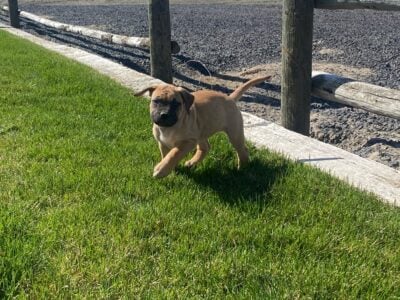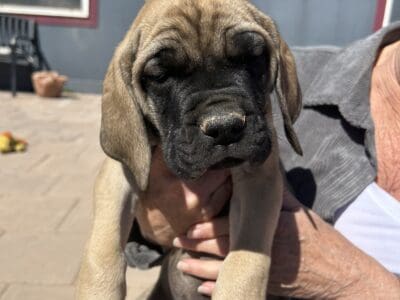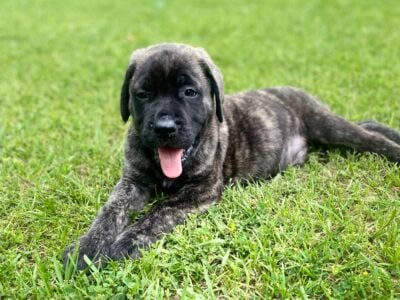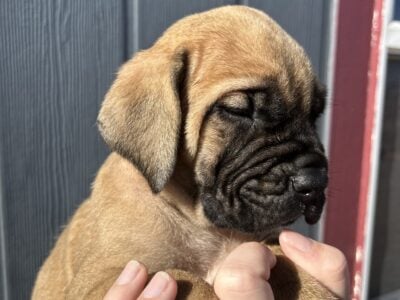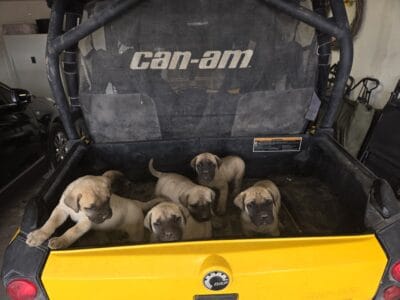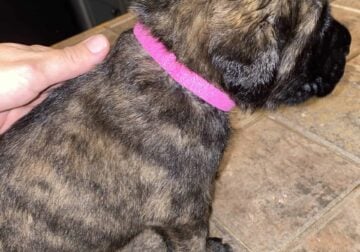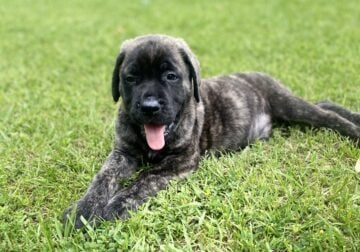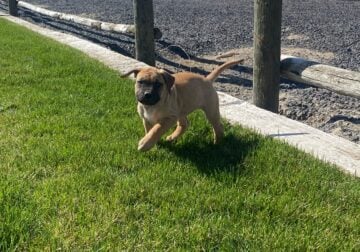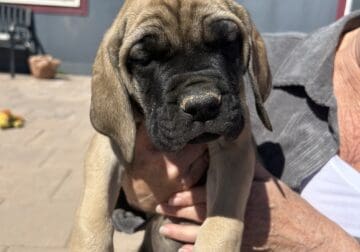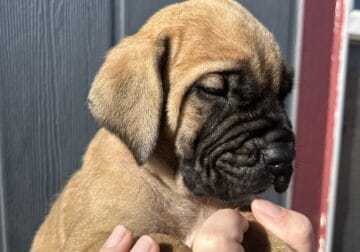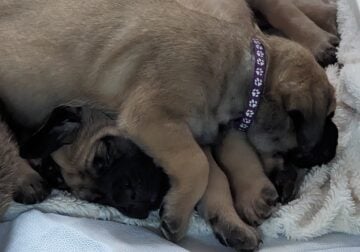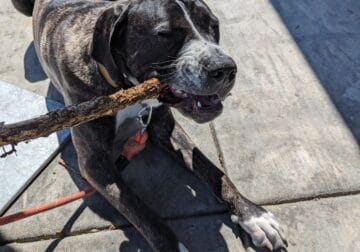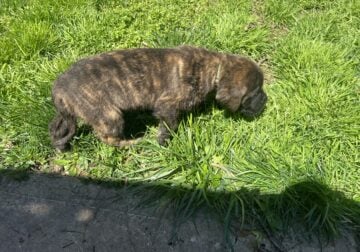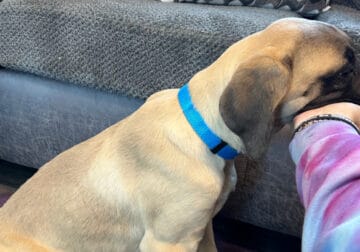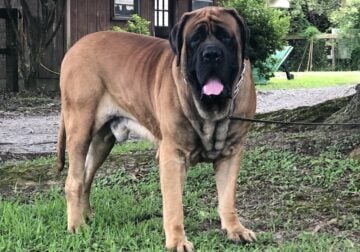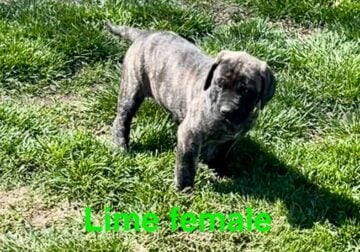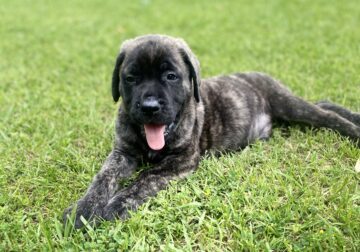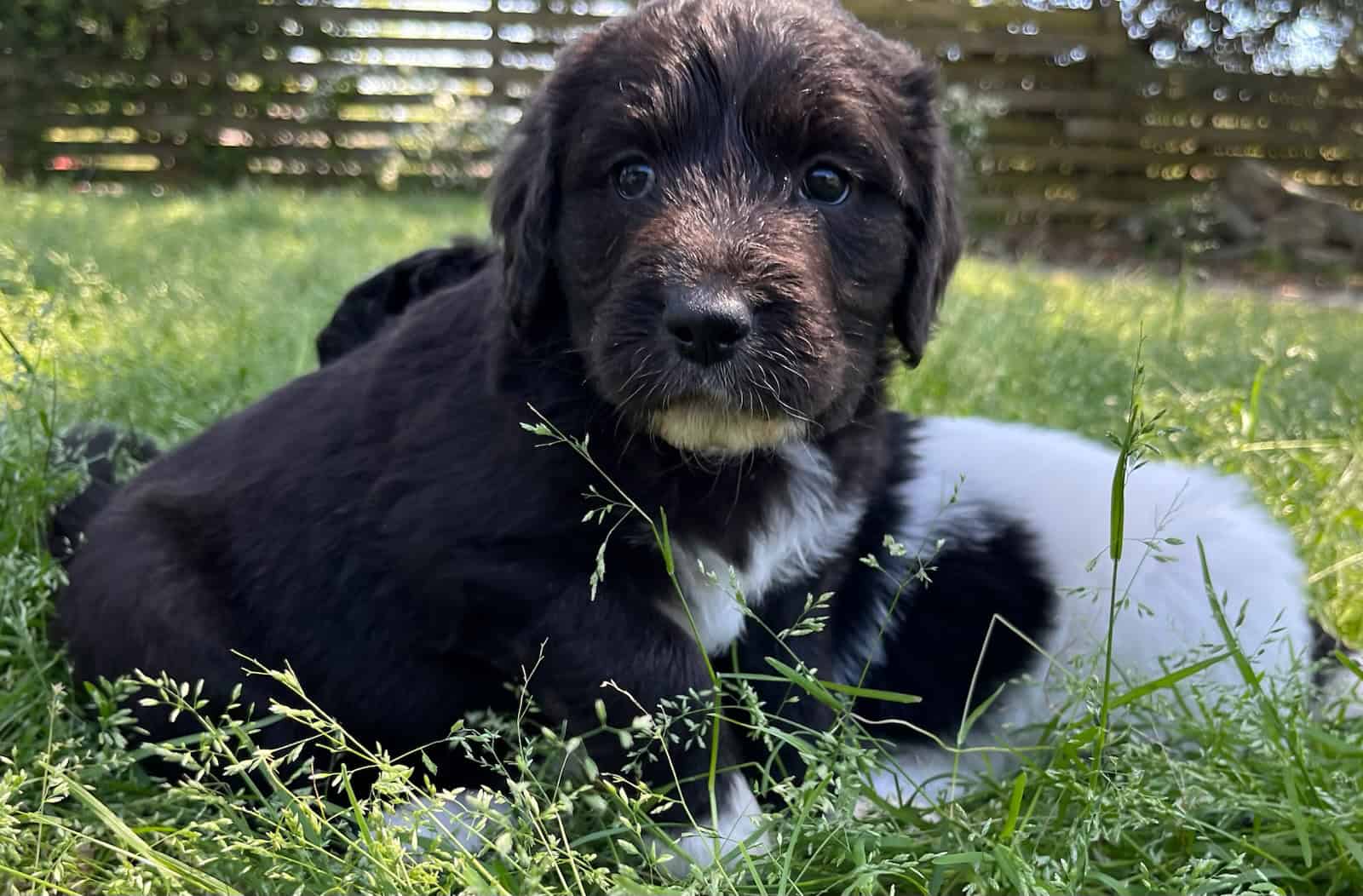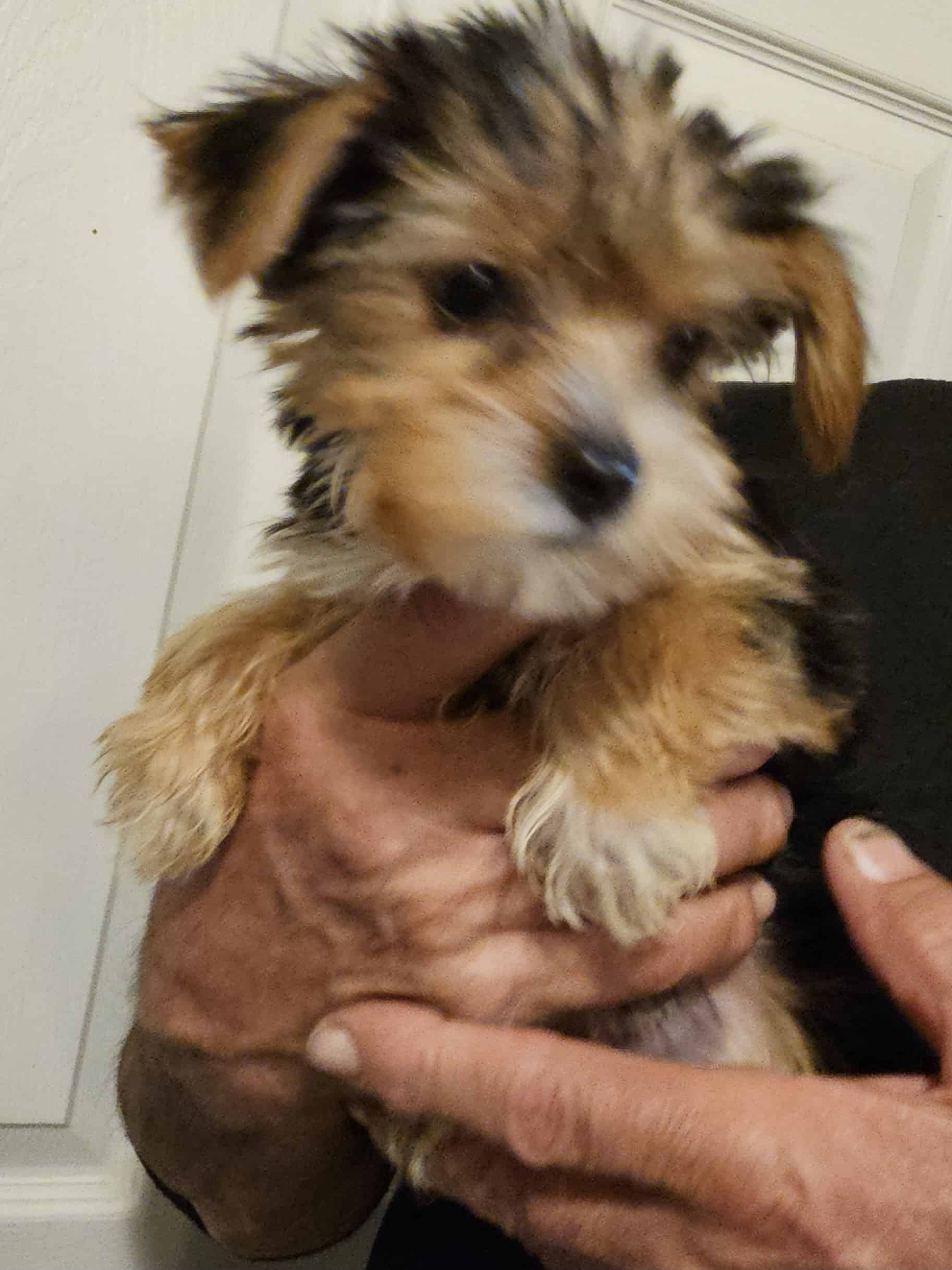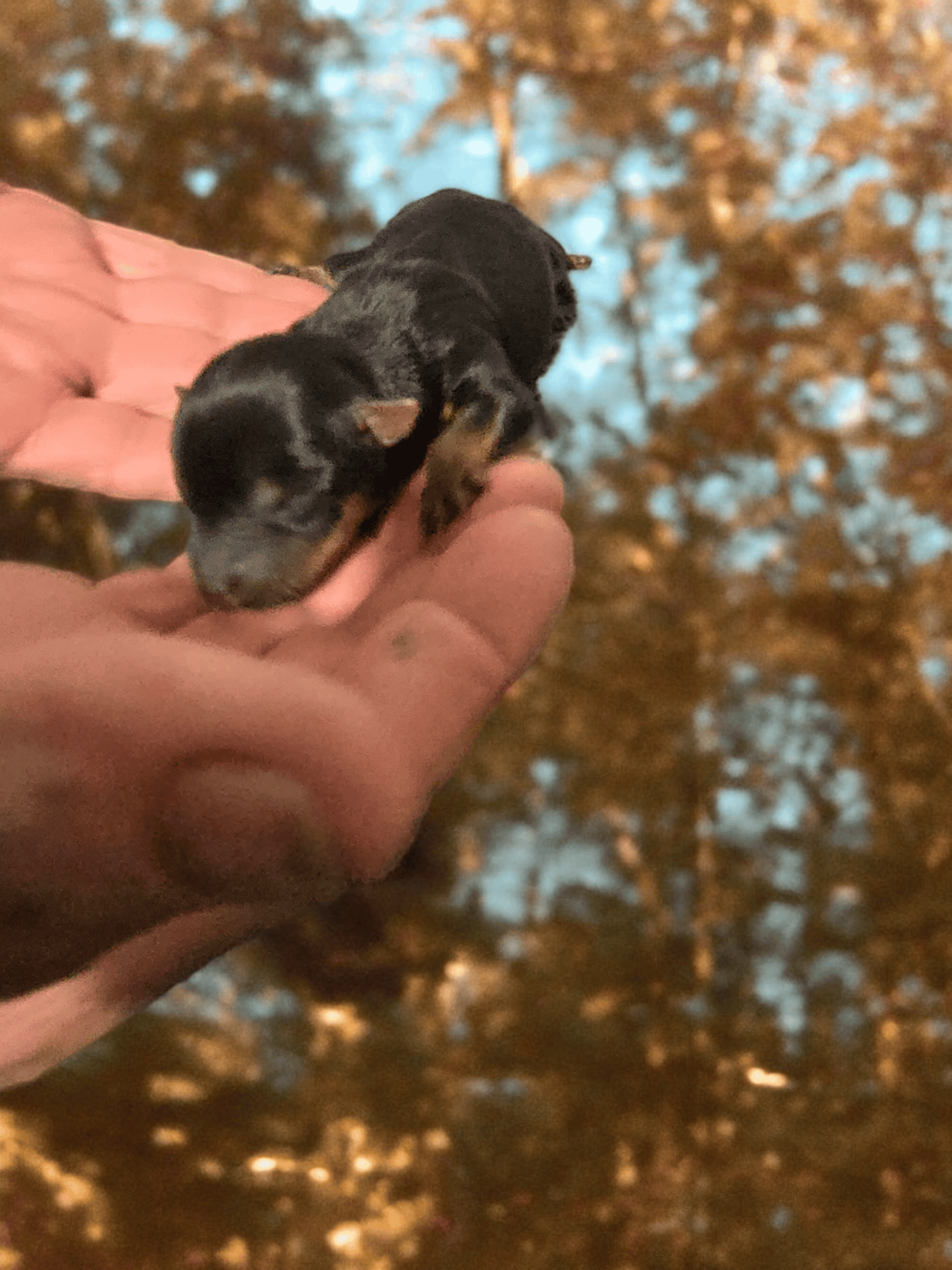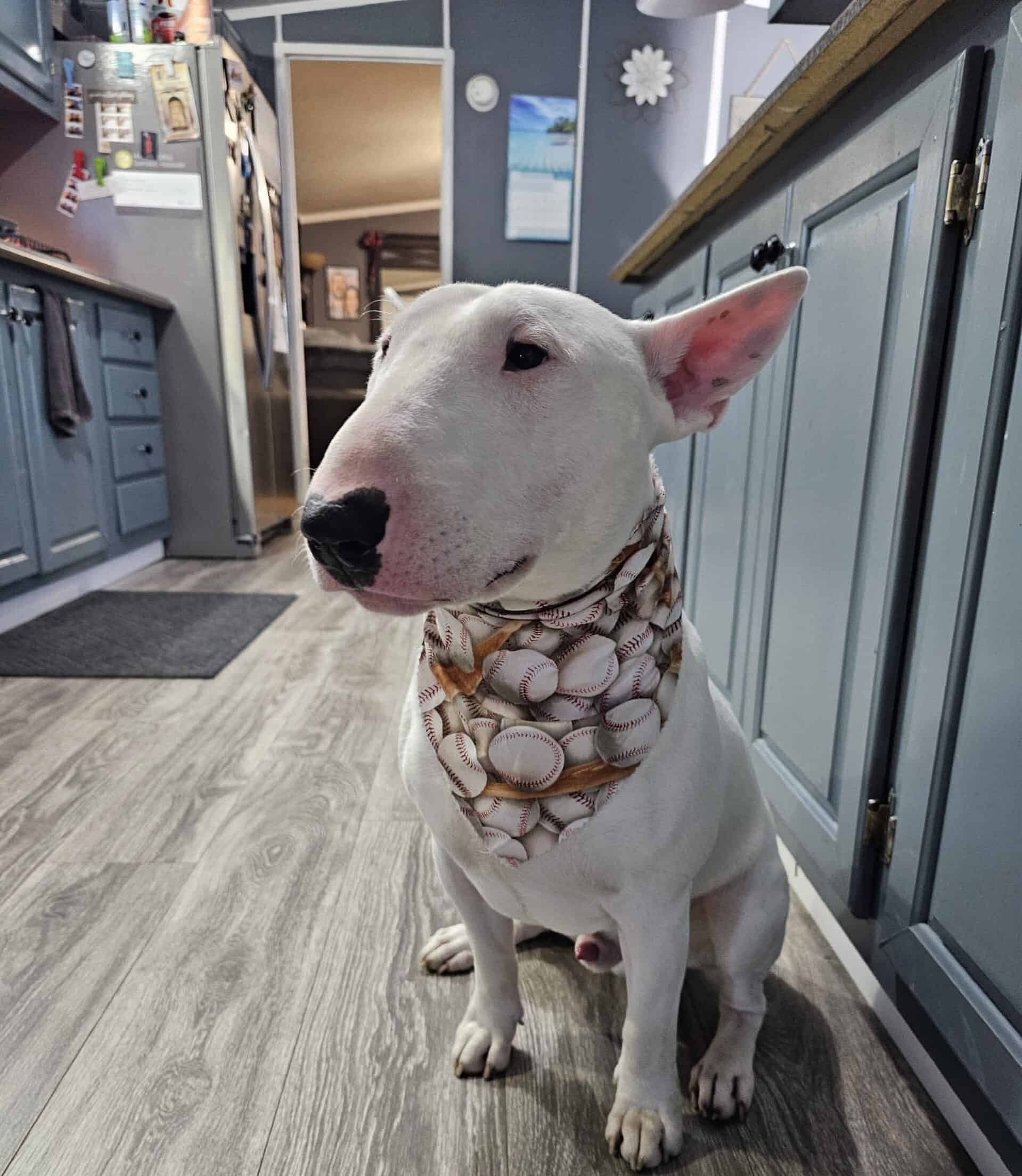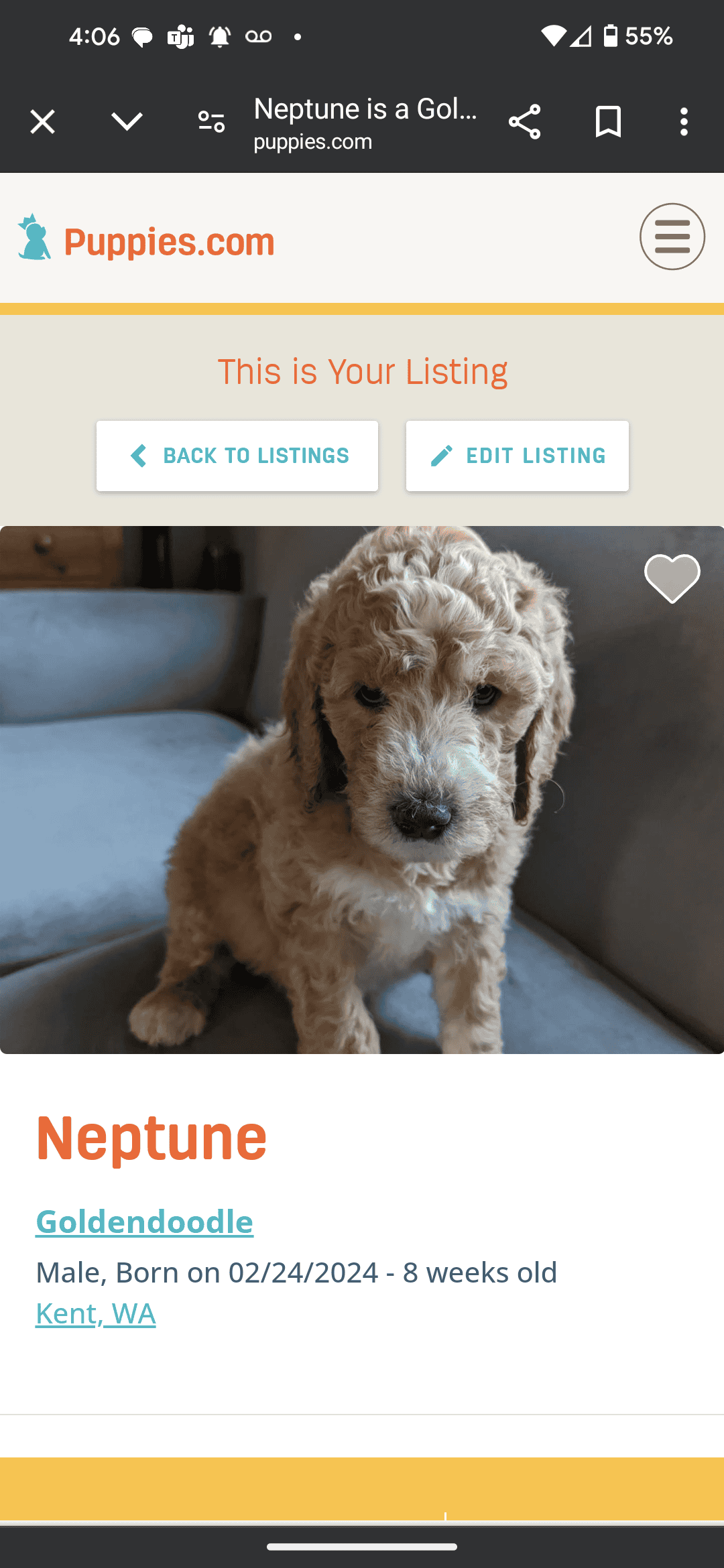English Mastiff Puppies for Sale: Be prepared for Massive on Another Level
The English Mastiff, also correctly referred to simply as a Mastiff, is among the largest dog breeds. Although not the tallest dog, a Mastiff is usually the heaviest canine pet in the room. Famous for their laidback and gentle natures, Mastiffs are loyal, affectionate, and steady. They suit families with a lot of space and sufficient patience to dedicate to training.
English Mastiff Puppies for Sale Near Me
The more accurate and traditional moniker for an English Mastiff is Mastiff. The reference to English Mastiffs for sale has become more common to distinguish the Mastiff breed from the Mastiff group (Neopolitan, Rottweiler, Bullmastiff, and others).
Considering that English Mastiff puppies for sale are 15 to 30 pounds before they are eight weeks old, it is not surprising that breeders are tempted to sell them early. After all, they usually come from a large litter, and each puppy eats 0.5 to 1.5 pounds of food daily. Nevertheless, resist acquiring a pup that is under two months old because it will likely have a difficult time developing social skills with other dogs and accepting authority from people. Local pups allow you to visit them before making a final decision. Hopefully, you can also meet the pup’s parents and access family trees and health screenings. Recommended certificates for Mastiffs involve the following:
- Hips: OFA or PENN for dysplasia
- Elbows: OFA for dysplasia
- Heart: cardiac evaluation and genetic screening for Cardiomyopathy
- Eyes: evaluation for eyelid abnormalities and genetic screening for progressive retinal atrophy
When choosing a puppy, select one that has clear eyes and no evidence of a runny nose or diarrhea. Puppies should be in good flesh, although Mastiffs do not look as plump as smaller breeds. Make sure that the puppy’s environment is reasonably clean and orderly.
How to Care for Your English Mastiff
Mastiffs are high-maintenance dogs because of the expense and time commitment associated with their size.
Grooming
A Mastiff has a short coat. You only need to brush your dog once or twice weekly. The nails, which need trimming every four to twelve weeks, are thick, strong, and dark-colored. You may be well served to take your English Mastiff to a veterinarian or professional groomer to get its nails cut and receive a bath. Other tasks on your grooming to-do list are as follows:
- WIpe around your dog’s eyes and clean between any facial wrinkles with a soft, damp cloth
- Check your Mastiff’s ears for signs of an infection – redness, discharge, swelling
- Swab the outer ear canal with a cotton ball before baths or whenever you notice excessive wax
Feeding
Mastiffs eat less per pound of body weight their than small and medium dog breeds. That is little consolation for owners of dogs that weigh well over 100 pounds. An English Mastiff typically needs 1,675 to 3,500 calories (4 to 11 cups of kibble) per day depending upon weight and gender. Puppies require 70 to 100 calories per pound during rapid growth. To support their tremendous growth and accommodate the large volumes of food they require, puppies should get six to eight meals a day before the age of four months. At six months they still benefit from four to six daily feedings. Because your English Mastiff is so large and deep-chested, you should still feed its daily rations in two to four portions separated by several hours. Like any dog, Mastiffs require a high-quality meat-based diet. Fresh whole-food diets are often cost-prohibitive, so Mastiffs typically eat dry kibble that some owners combine with raw morsels or commercial toppers.
Exercise
A Mastiff needs about 40 to 60 minutes of exercise every day. Compared to other breeds, they do not need many high-intensity activities (should only comprise about 10% of their daily regimen). A daily walk at a moderate pace is a suitable exercise for your Mastiff. You should intermix it with training for mental enrichment and a few ball or Frisbee throws to encourage romping. Puppies should not participate in organized strenuous activities such as jogging, running, or jumping until they are two years or older (the approximate age when growth plates fully close). Despite your English Mastiff’s low-energy behavior, she needs daily exercise to prevent problems that come from boredom. You also want to do everything in your power to keep your dog from becoming overweight.
Socialization
A giant-sized dog requires you to expend extra time on socialization and training. While the English Mastiff for sale is no longer an aggressive breed, improper or insufficient socialization can lead to fearful or unprovoked attacks and biting. You can easily imagine how dangerous a frightened and defensive dog the size of a Mastiff can be. Moreover, you need to train your Mastiff so its potentially unruly behavior does not become destructive. Basic commands that every dog should learn are recall (come immediately when called), sit, down, heel, and sit-stay. Advanced training can help keep your Mastiff engaged and fulfilled as an adult. Stanley Coren, a renowned canine psychologist and behavior expert, ranked the Mastiff in the bottom 10 of about 80 breeds in terms of working intelligence. Despite their history as working dogs, Mastiffs are challenging to train. They are not naturally obedient and often display stubbornness even when training is accompanied by rewards. Mastiffs are also surprisingly sensitive. They will shut down completely with harsh language or any perceived injustices. You should start training your Mastiff as young as possible before he realizes his size and strength.
Brief History
True to its nickname, the Mastiff originated in Britain likely from the now-extinct Pugnaces Britanniae (a mastiff-type British war dog) and Alaunt (perhaps a landrace mastiff from Asia and Central Europe). Ancient Romans, who were responsible for bringing so many dogs to Europe, exported Mastiffs from Britain. Therefore, the English Mastiff infiltrated Roman mastiff types rather than the other way around. By the 1100s, the English Mastiff was an established estate-guarding breed in England. It was much more athletic than modern Mastiffs and more ferocious. World War I and WWII decimated the Mastiff’s numbers as did waning popularity and demand. Infusions of other breeds became necessary to revive the Mastiff population. The preservation of the English Mastiff along with a growing preference for heavier types meant the use of the Saint Bernard, Tibetan Mastiff, and Dogue De Bordeaux in breeding programs. Additional height and refinement were achieved through the use of the Great Dane. Americans helped reestablish the Mastiff after WWII with British imports. The AKC accepted the breed as Mastiff in 1885.
Mastiff Lifespan
The English Mastiff’s giant size takes a toll on its health and longevity. Mastiffs live six to nine years. Some defy the odds with a lifespan of 10 to 12 years.
Mastiff Appearance
Mastiffs are massive in the head and body. A female should be at least 27.5 inches tall, and a male should stand more than 30 inches high at the withers. English Mastiffs weigh 120 to 230 pounds with males substantially larger than females. Mastiffs are longer than they are tall with deep chests. The back is level with a slight upslope from the shoulders to the hips. The tail hangs down to the hocks without much tapering. A Mastiff has heavy-boned and muscular limbs and body. It has a short hard coat that is fawn, apricot, or brindle (fawn with dark stripes).
English Mastiff Personality
Even English Mastiff puppies for sale are fearless, boldly exploring their environments. As adults, the English Mastiff is calm, courageous, and noble. Although many are protective of their owners, Mastiffs rarely display aggression. Their size and formidable bark generally mean they never have to threaten to bite. Mastiffs are agreeable with other dogs and children. Their size warrants extreme caution be taken when they are around toddlers or small-breed dogs. You may be safest to avoid such interactions altogether.
